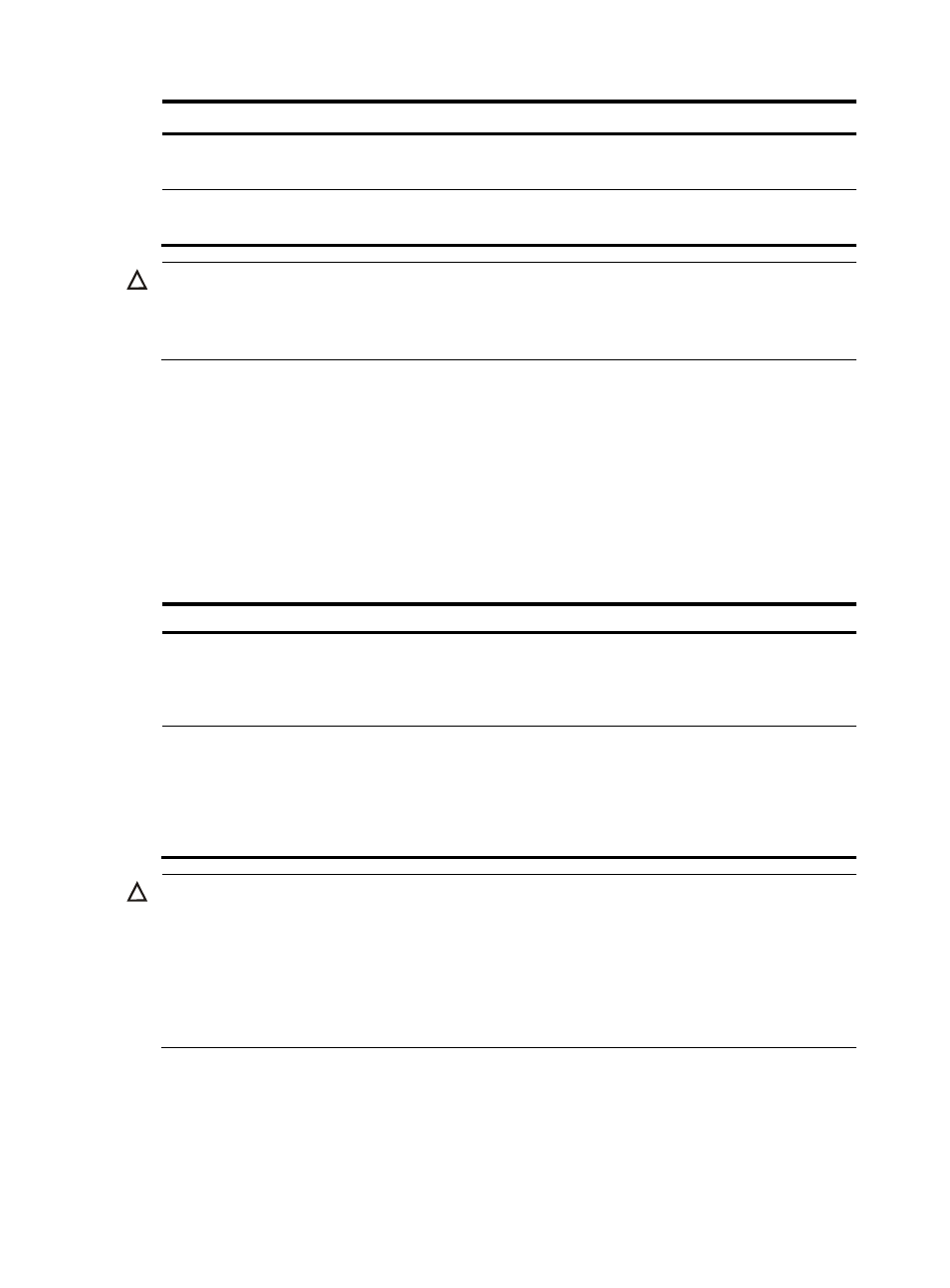Mounting/unmounting a storage medium, Partitioning a cf card or a usb disk – H3C Technologies H3C SecPath F1000-E User Manual
Page 173

6
To do…
Use the command…
Remarks
Restore the space of a storage
medium
fixdisk device
Optional
Available in user view
Format a storage medium
format device [ FAT16 |
FAT32 ]
Optional
Available in user view
CAUTION:
When you format a storage medium, all the files stored on it are erased and cannot be restored. In
particular, if there is a startup configuration file on the storage medium, formatting the storage medium
results in loss of the startup configuration file.
Mounting/Unmounting a Storage Medium
For a hot swappable storage medium, such as a CF card, you can use the mount and umount
command to mount or unmount it. When a storage medium is connected to a lower version system, the
system cannot recognize the storage medium. To perform read and write operations to the storage
medium, you must mount it.
When a device is unmounted, it is in a disconnected state, and you can then remove the storage medium
from the system safely. Mounting a storage medium reconnects the storage medium to the system.
Follow the step below to mount or unmount a storage medium:
To do…
Use the command…
Remarks
Mount a storage medium
mount device
Optional
By default, a storage medium is
automatically mounted and in mounted
state when connected to the system.
Unmount a storage medium
umount device
Optional
By default, a storage medium is
automatically mounted and in mounted
state when connected to the system.
Before unplugging a storage medium,
unmount it.
CAUTION:
•
When mounting or unmounting a storage medium, or performing file operations on it, do not unplug or
switchover the storage medium or the card where the storage medium resides. Otherwise, the file system
could be damaged.
•
Before removing a mounted storage medium from the system, unmount it to avoid damaging the storage
medium.
•
You can only mount/unmount a partition rather than the storage medium.
Partitioning a CF Card or a USB Disk
A CF card or a USB disk can be divided into several different logical devices called partitions. You can
respectively perform file operations on each partition, thus preventing the interference of files between
partitions.
